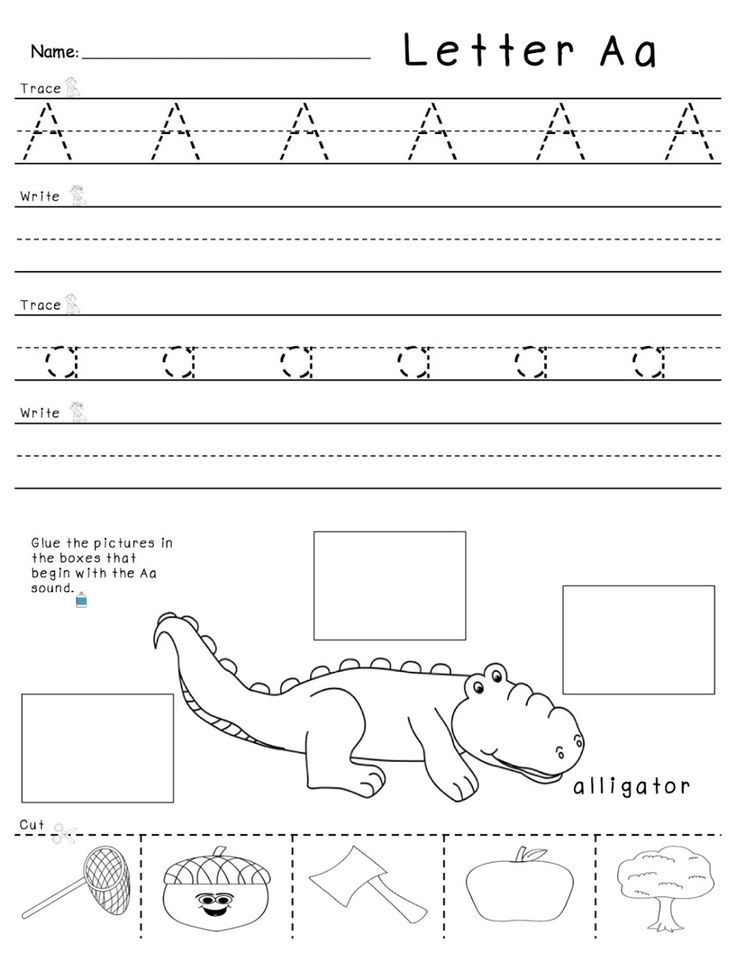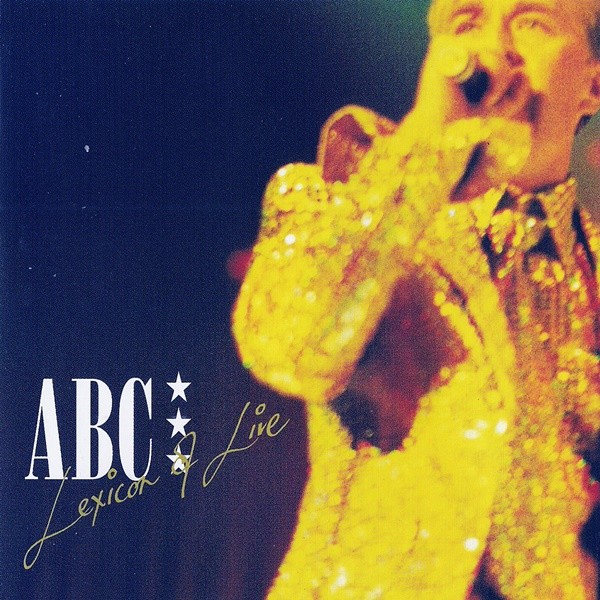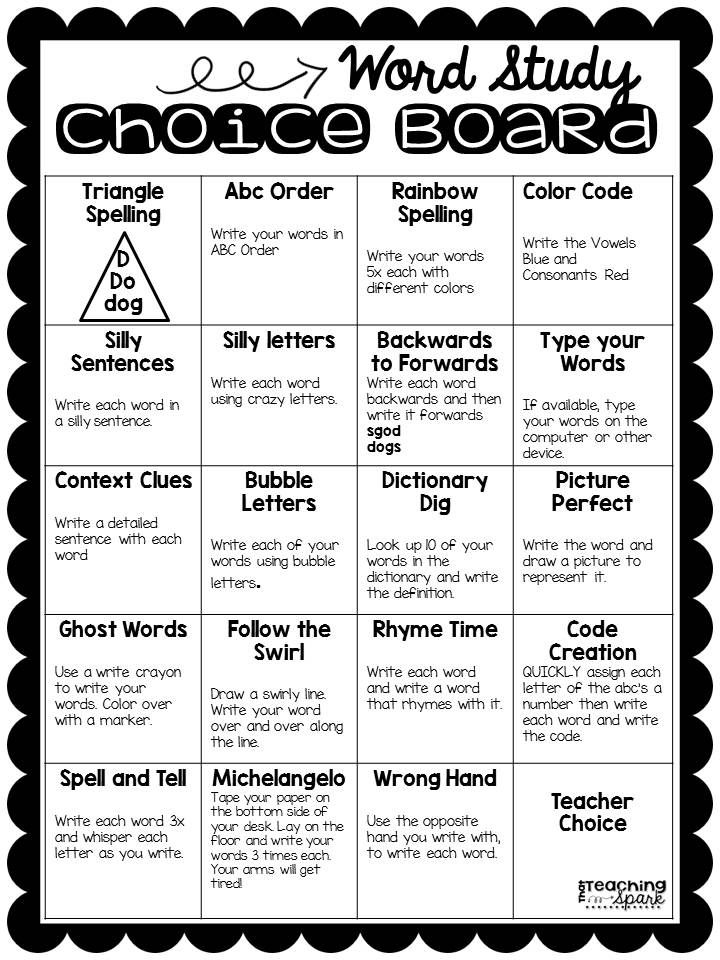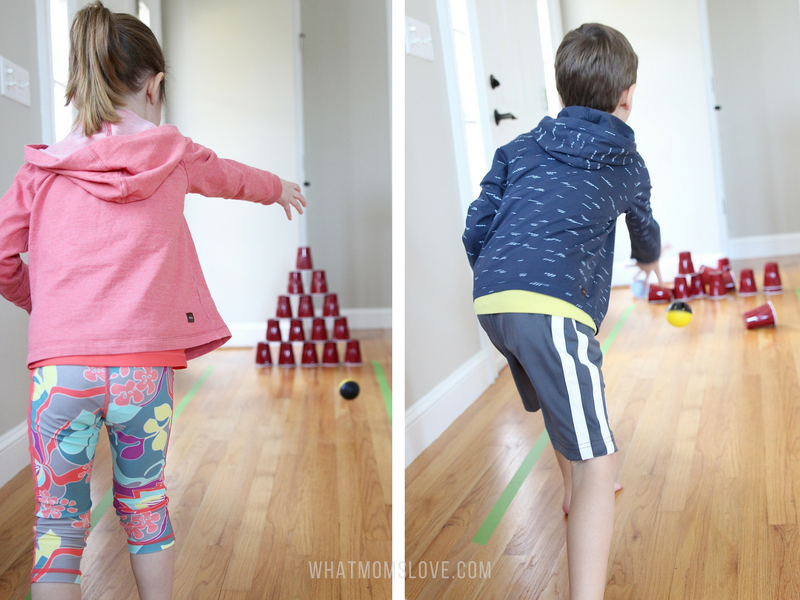Teaching kids to write a letter
An Introduction to Letter Writing
By: My Child magazine
Introduction
Letter writing is an essential skill. Despite the prevalence of emails and text messages, everyone has to write letters at some point. Letters of complaint, job applications, thank you letters, letters requesting changes or making suggestions — the list goes on and on. Encouraging children to write letters from an early age will improve their communication, social and handwriting skills, and teach them what they need to know about writing and structuring letters.
In this article:
What's so special about receiving a handwritten letter?
Quite apart from curriculum requirements, being asked to write letters is a task that will appeal to children. The sheer fun of sending and receiving letters appeals to every child. There is something special about putting letters into the post box and then having letters delivered by the postman… the brightly colored stamps, seeing your name on the envelope and knowing that inside is a long awaited letter from a friend or member of the family.
It shows someone cares and has taken the time to sit down and think about you.
Handwritten letters have a charm of their own. You can take time to think about what you want to say. You can keep letters to read again and again. You can admire the handwriting; share dreams and thoughts. Responding by letter is very different to the immediacy of a text message or an email.
Back to Top
Activity 1: Warming up to letter writting
Use the above themes to encourage the children to discuss letter-writing. Ask the children to put their hands up if they have ever received a personal letter. Ask for one or more volunteers to talk about how they felt to receive the letter. Here are some initial questions that may help:
- What was in your mind as you read the letter?
- Did you keep the letter to read again?
- Did you share your letter with anyone?
- Did you write back?
And some questions for whole class or group discussions:
- Can the class describe any differences between the handwritten letter and an email?
- Do the children think there is ever a time when only a handwritten letter will do?
Ask the class to interview each other to find out each individual's experiences of writing and sending letters. This can be recorded in a chart.
This can be recorded in a chart.
Back to Top
Activity 2: Introducing letter writing
Collect a supply of different types of letters — both formal and informal. Ask the children to sort them out into two groups. Which were written to friends? Which are formal letters from businesses? Which features or characteristics distinguish formal from informal?
Having done that ask the children to look for differences between the two groups. This allows a discussion to take place about the different types of letter. Draw up a chart for each group covering:
- Address — business or private?
- Greeting — formal or informal?
- Style of letter — friendly or business?
- What is the message?
- How does the letter end?
This will allow the children to find out for themselves the differences between formal and informal letters.
This could be followed by a discussion of the type of letters the children or their families write. How many occasions can they think of which would deserve a letter to be written? For example:
How many occasions can they think of which would deserve a letter to be written? For example:
- Letters of congratulation
- Exchanging news
- Writing to friends
- Letters saying sorry for doing something wrong
- Making appointments
- Asking for information
- Dealing with banks or stores
- Letters to family members who live some way away
- Letters to Santa Claus
- Thank you letters
- Letters showing how much you appreciate someone
- Letters responding to someone who has had bad news — showing how much you care by trying to share their sadness
- Letters of complaint
- Letters to newspapers and magazines
In each case the children should decide what type of letter would be most appropriate in each case — formal or informal? Draw up a chart for each group.
Back to Top
Activity 3: Formal letters
These are sometimes known as business letters. They are written in a strictly formal style.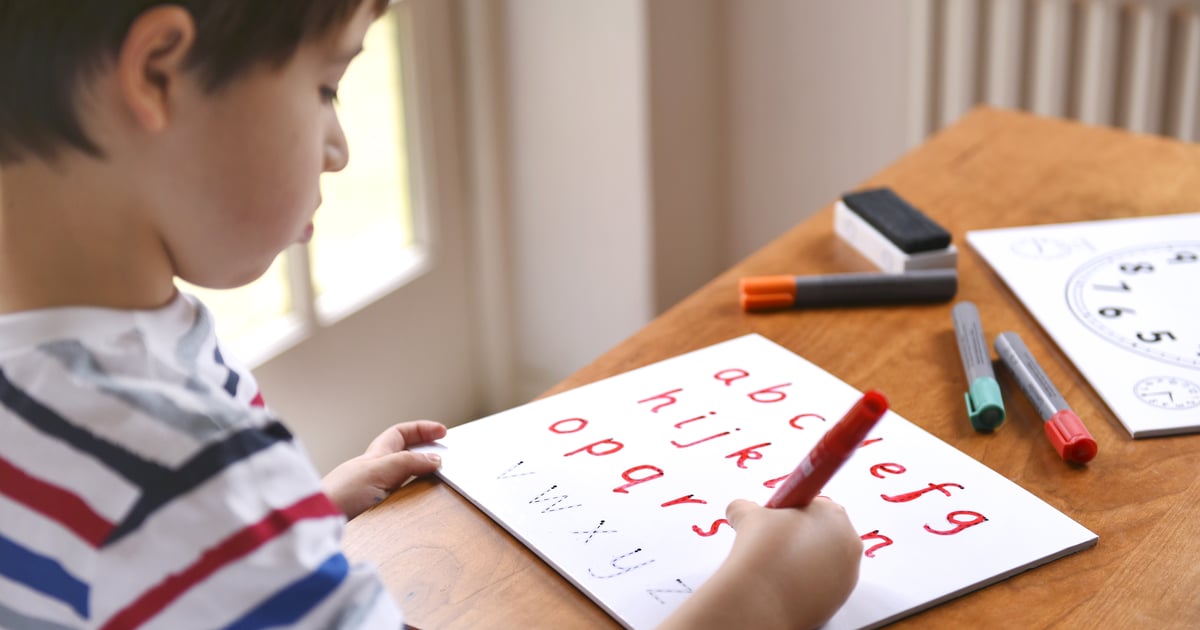 Such letters are always written on an A4 (8" x 11") sheet of paper. They can be folded three times so that the address to which the letter is being sent can appear in the window of a business envelope. The layout is always the same.
Such letters are always written on an A4 (8" x 11") sheet of paper. They can be folded three times so that the address to which the letter is being sent can appear in the window of a business envelope. The layout is always the same.
Structure:
- The senders address is put at the top right hand side
- Include telephone number and email if available
- The address of the person receiving the letter goes on the left hand side below the sender's address
- The date
- Greeting — Dear Sir or Madam. You can use the titles Miss, Mrs. or Mr. if you know the name of the person to whom you are writing
- The message
- Complimentary close — Yours faithfully or Yours sincerely
- Signature
- Write name in block letters (this is to ensure that the person receiving the letter knows exactly who has sent it. Signatures may not be very clear)
Back to Top
Activity 4: Informal letters
These are letters to friends and relations, or people you know well. Structure:
Structure:
- The sender's address should always appear on the top right hand corner of the page.
- Include telephone number and email if available
- Greeting — There are several variations that can be used depending on how well you know the person: Dear Mary, Hi Mary, Greetings
- Complimentary close — short comment, for example Love, Lots of love, With thanks, See you soon
Tips for writing good letters
- Make sure that they are well written. It can be very annoying for someone to have to struggle to read handwriting. Always use your best and clearest handwriting.
- Make sure all your contact details are clearly written down at the top of the letter. If they are not, then you might not get a reply. The correct address is essential.
- Think about what you want to say. If necessary make some notes on a separate sheet of paper first. This will ensure that you do not forget anything.
- Think about to whom you are writing the letter.
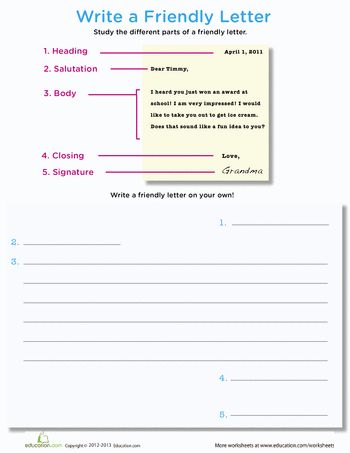 Use the right style of writing and language — formal or informal, business like or friendly.
Use the right style of writing and language — formal or informal, business like or friendly. - Lay out your letter using paragraphs. This makes it easier for the reader.
Back to Top
Activity 5: Letter of inquiry and letters providing information
Suitable for school, children ages 7-9
These are formal letters and messages need to be precise and detailed, covering all the required information. Two types of letters can be undertaken — a letter requesting information; and a reply providing it.
Out in the Milky Way, there is an alien curious about Earth. He writes a letter asking for information about liquids and gases. These do not exist on his planet and he finds it hard to understand what they are.
Write a letter explaining what liquids and gases are. How do they work? What examples could be included? What would be confusing about them? This could link to your science curriculum and could act as a revision exercise giving an opportunity for a discussion about gases and liquids.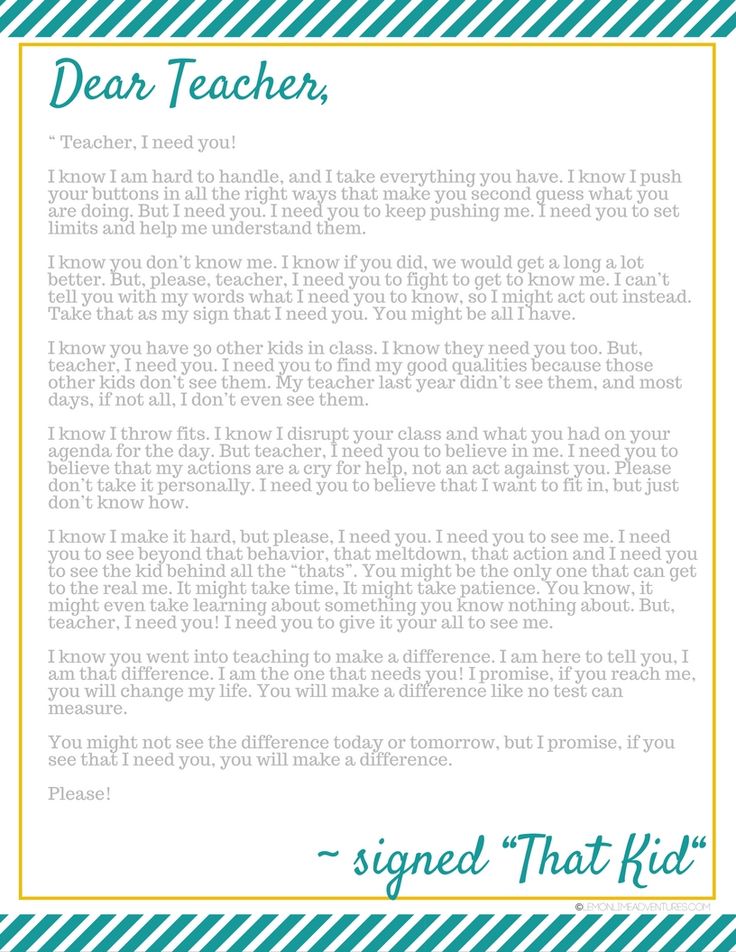
The following day, give the children a thank you letter from the alien!
You could link up with another class in the school. One class could write letters of inquiry. These would be delivered to the second class for answering.
Back to Top
Activity 6: Thank you letters
Suitable for school, children ages 5-7 and 7-9
Thank you letters are very important and can be used in lots of ways: thanking organisations for helping, thanking people for helping you, thanking someone for a lovely time. They make a good follow up exercise after receiving presents or going on a visit.
Your class has just been out on a school visit to a farm. Write a thank you letter to the farmer. You will need to say thank you and how much you enjoyed the visit. Give some examples of what you enjoyed best about the day? Was it feeding the lambs? Pond dipping? Seeing the young animals?
Back to Top
Activity 7: Letters of invitation
Suitable for school, children ages 5-7 and 7-9
Everyone likes receiving invitations.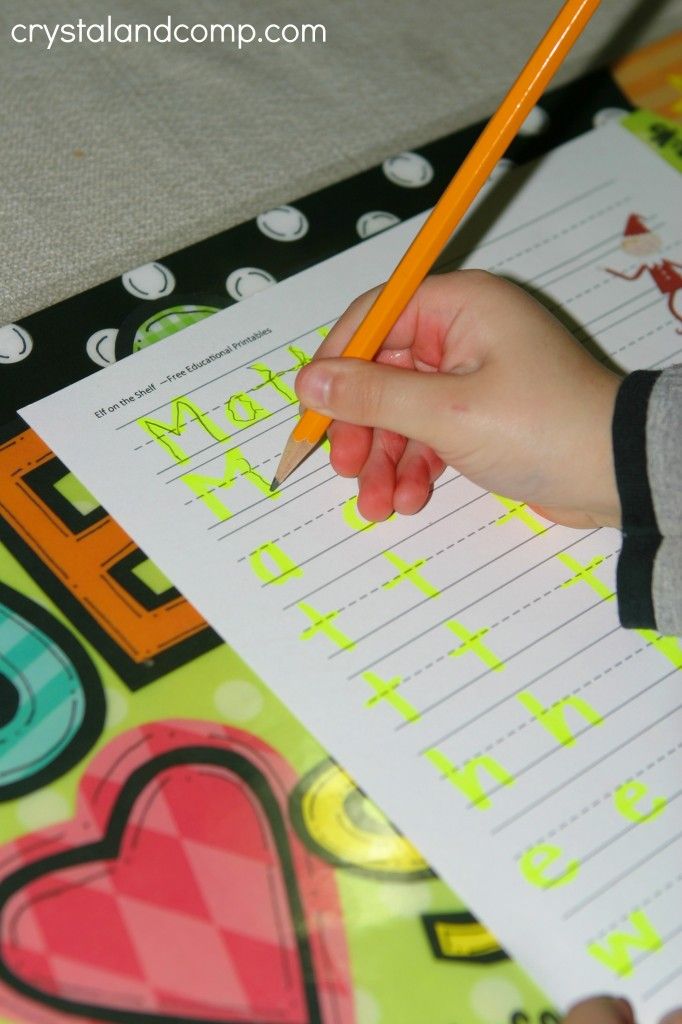 Receiving a hand written letter asking you to a party or a special event makes you feel very special.
Receiving a hand written letter asking you to a party or a special event makes you feel very special.
Discuss what type of event might create a need to write letters of invitation. There are plenty of examples — birthday parties, Christmas parties, a visit to a beach with friends; going out to a farm or to the cinema, a wedding or when a new baby is christened; or simply inviting a friend to stay overnight at your house.
Choose a special event and write a letter inviting a friend. What do you need to include in the letter so that they have all the necessary information? You need to be clear on the date and the time, as well as the location. Your friend would be very upset if he or she went to the wrong place. Does he or she need to bring anything with them? Does he or she need to be collected at a set time? Will outdoor clothing be needed if the weather is bad? How will your friend reach the location of the event? Should a parent bring them or will you provide transport?
Remember to ask them to reply saying yes or no.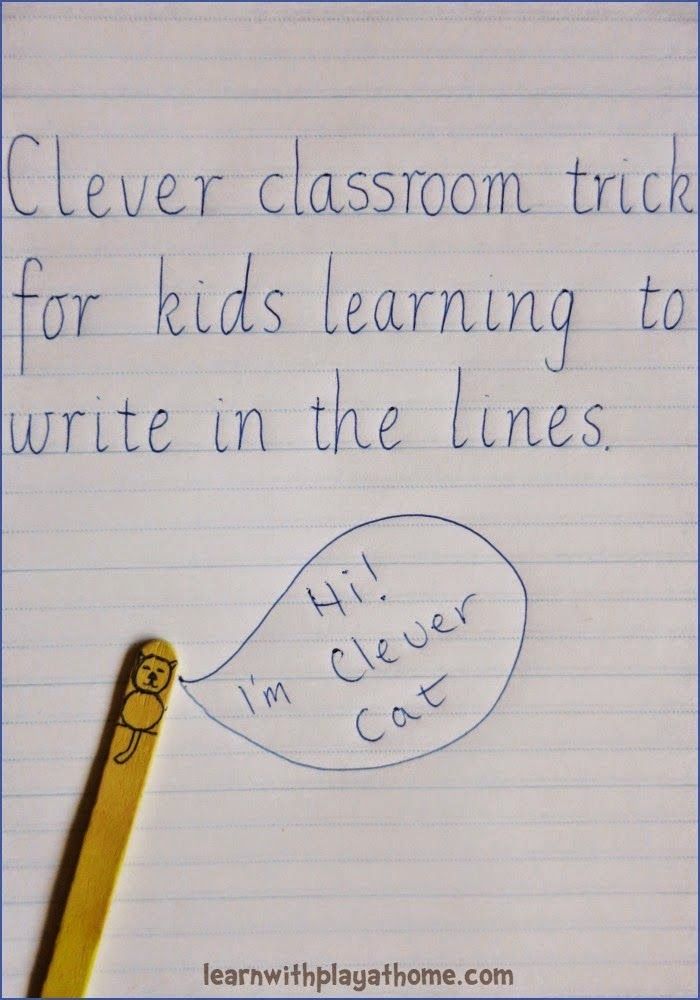 Give a date by which you must have their reply. This is important if food and drink are being provided, or if you need to know exactly how many people are coming.
Give a date by which you must have their reply. This is important if food and drink are being provided, or if you need to know exactly how many people are coming.
Back to Top
Activity 8: Letters of complaint
Suitable for school or home, children ages 5-7 and 7-9
When might a letter of complaint be sent? It might be when someone has done something wrong. Sometimes people write letters to organisations or the newspapers to complain about litter or poor service.
Just imagine what Mr. Bear must have been thinking at the end of the story of Goldilocks and the Three Bears. A naughty girl had broken into his home, eaten his porridge; broken a chair and then gone to sleep on his child's bed. Then she had run away without even saying sorry when the bears came back.
Write a letter of complaint from Mr. Bear to the parents of Goldilocks. What would he say? He would need to get his complaint across very strongly. There would be a list of Goldilocks' misdeeds. He would ask for an apology. Would he ask for payment for the broken chair? Would he ask for action to be taken against Goldilocks? Discuss the various possibilities with the children. What might he ask? Would it be a formal or informal letter?
He would ask for an apology. Would he ask for payment for the broken chair? Would he ask for action to be taken against Goldilocks? Discuss the various possibilities with the children. What might he ask? Would it be a formal or informal letter?
Back to Top
Activity 9: Letters to Santa
Suitable for school, children ages 5-7 and 7-9
Every year children write letters to Santa Claus, asking for special toys at Christmas time. But how many children think about Santa Claus himself? What is his life like? What are the problems of living amid all that snow and ice?
This is an exercise that could involve two classes within a school. Both classes should prepare for the task by listening to some unusual letters. J R Tolkein wrote a lovely book entitled Letters from Father Christmas. Every December a letter would appear telling wonderful tales of life at the North Pole — how the reindeer got loose and scattered presents all over the place; how the accident-prone Polar Bear climbed the North Pole and fell through the roof of Santa Claus's house.
Children in the younger class should write letters to Santa. They should ask about life at the North Pole. What do they think it is like? What sort of characters live there? How does Santa Claus occupy his time for the rest of the year? Consider how they would feel living in a land of snow and ice all year round? Would they want a holiday somewhere warmer?
Once the letters are written, gather them up and take them to an older group of children. Give each child a letter and ask them to write a reply. This would give them the opportunity to use their imagination and create imaginative responses, possibly little stories about life at the North Pole. They could also add in their own ideas. But care should be taken to make sure that all the questions in the original letters are answered.
Finally, take the answers back to the original class for reading and discussing.
Back to Top
Activity 10: Letters to newspapers and magazines
Suitable for school, children ages 7-9
These are letters that aim to pass on an opinion or a message.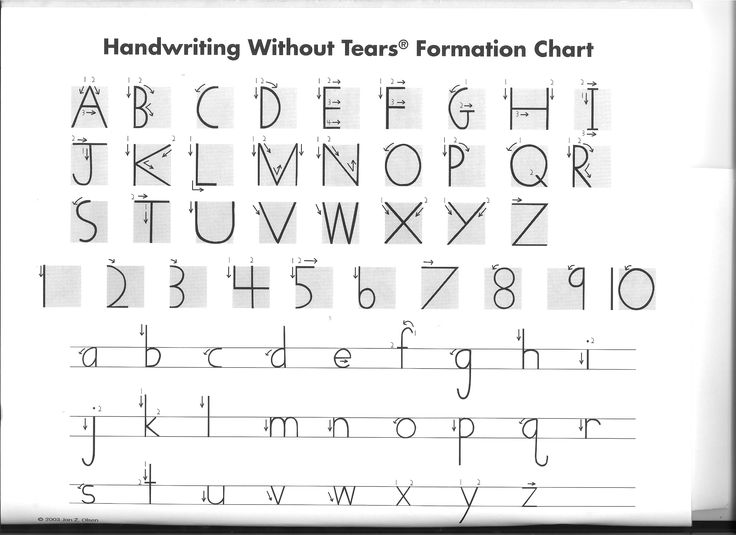 Examples can be easily obtained from local newspapers or from children's magazines such as DK Find Out or Aquila. They are written slightly differently to normal letters and are always addressed Dear Sir, or Dear — (name of magazine).
Examples can be easily obtained from local newspapers or from children's magazines such as DK Find Out or Aquila. They are written slightly differently to normal letters and are always addressed Dear Sir, or Dear — (name of magazine).
These are letters that are directed at a wide audience — anyone who happens to read it. The sender never gets a direct letter back through the post. Sometimes people are so interested in a letter, which has appeared in a magazine that they want to express their opinions. So they then write a letter to the magazine giving their comments.
So what might go into a letter to a newspaper or magazine? It might be a request — could you provide more stories about skate boarding, or nature? It might be a way of thanking people for providing help. Sometimes letters to local newspapers are used to thank people who helped find a lost dog or help after an accident; but who did not leave their names. By writing to the paper, the sender hopes that the message will reach the people concerned.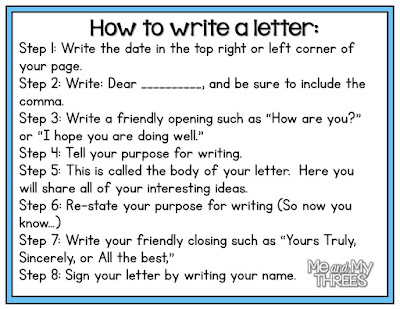 Sometimes such letters are used to express opinions such as on climate change, treatment of animals, poor services, not enough buses, and human rights.
Sometimes such letters are used to express opinions such as on climate change, treatment of animals, poor services, not enough buses, and human rights.
Letters of this kind need to be very precise. Arguments should be clearly made. Requests for action should be clearly indicated. From reading the letter, everyone should know exactly what the sender is asking.
A major issue is recycling and energy conservation. Everyone is trying to reduce the amount of energy we use. Look at all the reasons why energy conservation is so important. Then, write a letter to a paper or magazine saying why you believe we should avoid wasting energy. Give examples of how energy can be saved? What measures should we take in our homes or schools? Could anything more be done?
Back to Top
See 11 Helpful Activities to Teach Children to Write Letters & Numbers
What does research say about the benefits of teaching children to write letters and numbers accurately?
Research shows that handwriting is a foundational skill that can influence students’ reading, writing, language use, and critical thinking.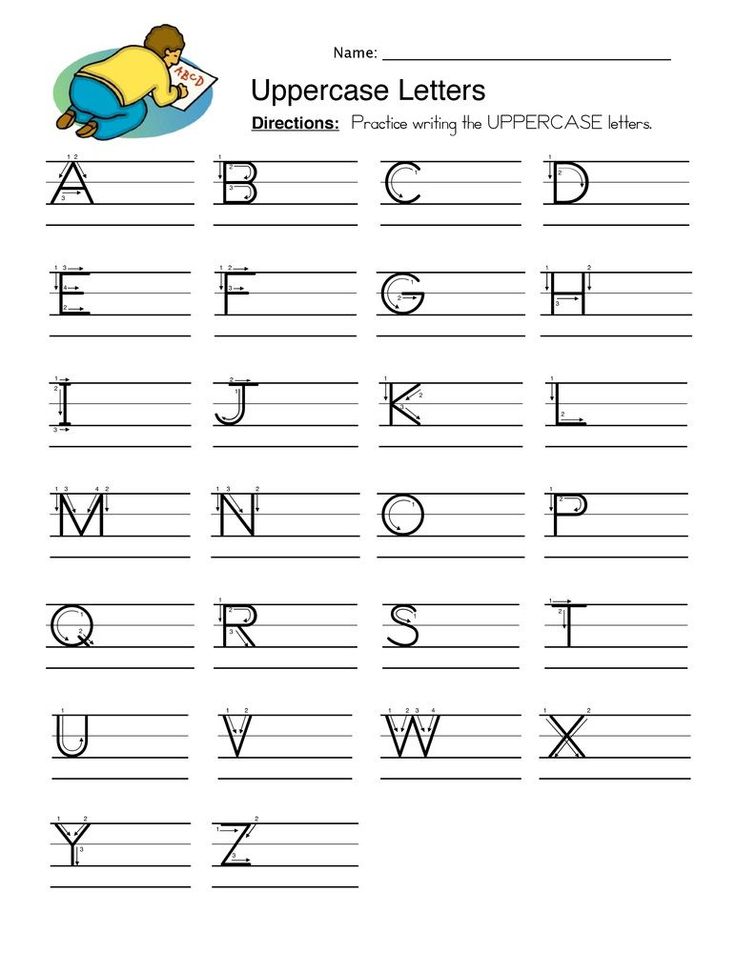 It has an important role in brain development. It is necessary to teach children to write, alongside technology in the classroom, as it promotes success in other academic subjects.
It has an important role in brain development. It is necessary to teach children to write, alongside technology in the classroom, as it promotes success in other academic subjects.
Handwriting provides children with the opportunity to create internal models for the symbol system necessary to succeed in academic disciplines (Dinehart 2013).
A standard expectation in education is that young students learn how to write legible, well-formed letters. So how do we teach a child to write letters and numbers legibly and accurately?
Research indicates the benefit of using multisensory activities to teach children to write letters and numbers.
According to scientific studies, children learn best by engaging in hands-on, multisensory learning that incorporates the five senses.
A study, conducted by Kast, Meyer, Vogeli, Gross, and Jancke (2007), found that targeting multiple senses during a writing training program helped students, with and without developmental dyslexia, to improve writing skills.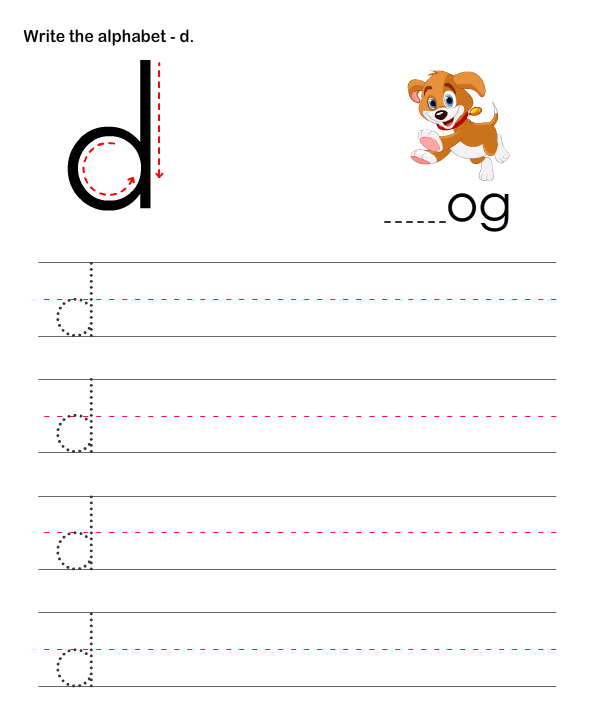
Multisensory instruction can also help children become more invested in the classroom. Results of a study by Molenda and Bhavangri (2009) stated that students become emotionally involved in multisensory activities in the classroom.
Also, research supports the use of a multisensory approach when teaching academics in general.
Here are ten multi-sensory/hands-on approaches to teach children to write letters and numbers.
These methods are used to help students address challenges such as illegible letters/numbers, inconsistency in letter/number size, and letter/number reversals.
1. Surface Tracing
Show your child a letter and ask him/her to pay attention to how it is formed/shaped. Then ask your child to try to trace it from memory on a table, door, window etc.
You can also trace a letter on any surface and have your child guess what it is. Use a large surface or small surface. Write large or small letters.
If your child is really struggling to trace or guess the letters, have her put her hand on yours while you trace the letter. You can also put your hand on hers while you guide her to trace the letter.
You can also put your hand on hers while you guide her to trace the letter.
You can even trace the letter on your child’s hand and have her guess it and ask her to trace a letter on yours and have you guess it.
Research demonstrates that having children attempt to write/draw letters from memory is an effective strategy when trying to teach children to write or to improve letter formation.
2. Stencil – Write the letters/numbers in stencils to naturally practice correct formation.
3. Ask your child to trace letters/numbers with arrow cues.
Students can trace with arrow cues on a piece of paper or a dry erase board. Once they have the hang of that (may take several sessions), ask them to trace without arrow cues.
Research shows that using arrow cues is an effective strategy when working with children on correct letter formation.
You can also get a handwriting workbook such as Lots and Lots of Letter Tracing
or a dry-erase book where your child can erase and rewrite the letters/numbers as many times as they want.
4. Look at the letter and then write it on paper or a dry-erase board from memory.
If a child struggles to keep the letters in the lines because of trouble with motor control or perceptual difficulties, provide them with wide-lined paper.
This is what wide-lined paper looks like:
Young children (or those with small hands) may also benefit from shorter/child-size pens/pencils.
5. Use the Wet-Dry-Try Method
The Wet-Dry-Try method is a component of the Handwriting Without Tears Program, a research-based handwriting intervention program.
How does the Wet-Dry-Try method work?
First, the adult writes the letter on a chalkboard.
Next. the child uses a sponge and then their finger to go over the letter to make a nice wet version of the letter.
Then the child lets the letter dry and traces over the letter with chalk.
See detailed instructions below.
Handwriting Without Tears has even come out with an app where your child can try the Wet-Dry-Try method on the IPAD.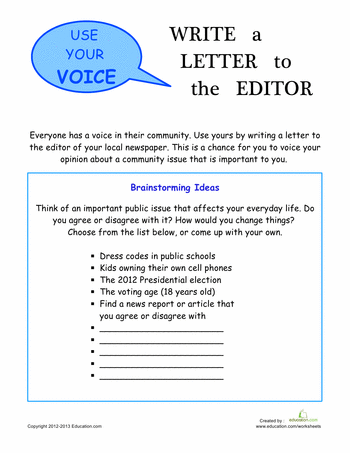
Here is an image of the app.
6. Feel/touch letter formations.
For instance, you could feel magnetic letters or make letters with play-doh or pipe cleaners and then feel/talk about their shape.
7. Write letters/numbers in sand or shaving cream.
8. Talk about letter formation.
For example, describe what a letter looks like-“a B has a straight line and two curves coming out to the right, a C looks like a crescent moon, an E looks like a comb with some missing teeth, a V is two slanted lines that meet at the bottom, etc.
Describe it to your child and have your child describe it to you. Talk about letter formation while you look at, write, or trace a letter.
9. Use mnemonic devices for b/d reversals.
Mnemonic devices are research-based techniques a person can use to help them improve their ability to remember something. Here are some examples of mnemonic devices for b/d reversals.
You May Also Be Interested In: Mnemonic Examples: Everything You Need to Know (And How to Use Them) by magneticmemorymethod.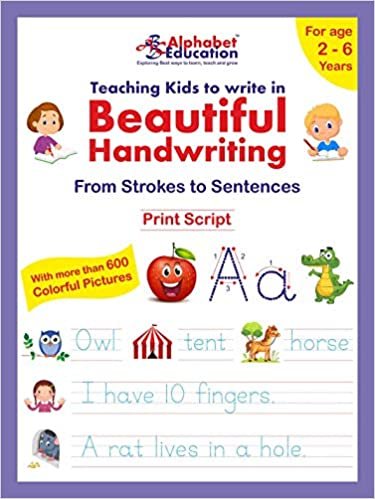 com
com
10. Write letters in clay.
Your child can use the point or back end of a pencil/pen or other carving tool. This will allow them to feel resistance when writing which is helpful for feeling letter formations and building hand strength.
Your child can look as they write or look (only if needed) and they try to write from memory.
11. Incorporate music and movement into learning.
Research demonstrates that music enhances learning and a component of multisensory learning (discussed above) often includes kinesthetic learning (learning that takes place by the student carrying out physical activities).
Check out these
Handwriting Without Tears moves.Here is a fun song that has the letters of the alphabet singing, dancing, and waving!
Keep in mind the following when working with students on writing:
Keep practice sessions short (e.g. 2 to 10 minutes for younger children or children who get easily frustrated and 10 to 15 minutes for older children or children who can work for longer periods without frustration), unless the child is eager to keep going.
For suggestions on ways to encourage children to complete tasks or assignments they do not want to do, read 3 Ways to Use Timers to Encourage Homework and Chore Completion and How to Use Schedules to Improve Children’s Behavior.
Remember to always stay calm when working with a child or student, even if you think they should be getting something that they are not getting.
If you get frustrated with them, they may start to feel anxious, angry, inferior, stupid, etc. which will lead to a less productive learning session.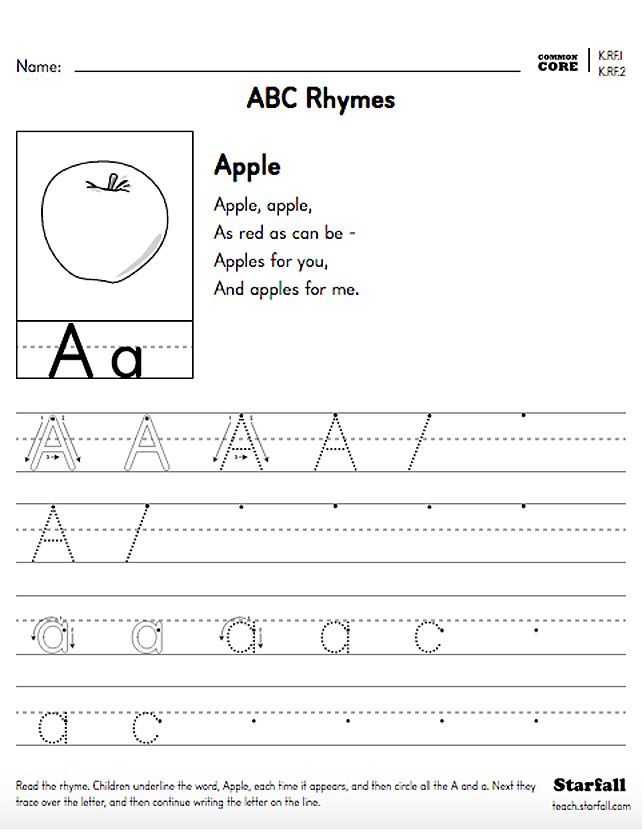
Want to know if the strategies recommended in this article are working?
Ask your child to write the alphabet and the numbers 1 – 10. Check how many letters have the correct form, positioning, and are clearly recognizable. Implement the strategies in this article two to five times weekly.
At the end of a chosen time period (let’s say 10 weeks) reassess your child’s ability to correctly write 26 letters of the alphabet and numbers 1 – 10.
If you see improvement, you know the interventions are working.
It is important for children to work on mastering one letter before moving on to the next. Mastery means they can correctly write the letter on a piece of paper from memory.
Related Article: How to Help Your Child with Handwriting and Pencil Grip
Here is some additional information about writing support for your child.
Studies estimate that between 10 to 30 percent of elementary school children struggle with handwriting (Karlsdottir and Stephansson 2002, as cited in Feder and Majnemer 2007).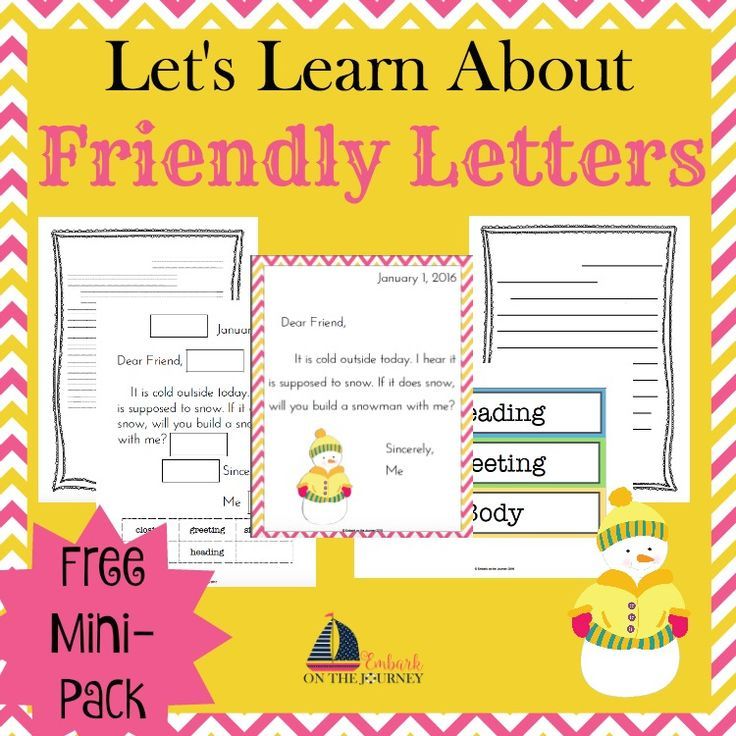
If you are concerned that your child is struggling with handwriting, talk to your child’s school to find out if they share the same concern.
If you are still unsure you can check with your child’s doctor or review handwriting milestones and guidelines such as the ones at North Shore Pediatric Therapy which indicate that by six years old children typically should be able to copy or write their name and be able to write the alphabet without omitting letters.
It also states that children are expected to write the alphabet in uppercase and lowercase letters without switching forms throughout and should also use appropriate capital letters and punctuation to write complete sentences.
By seven years old children are expected to write letters in the correct formation and position, particularly letters where reversals are common (example: ‘b’ versus ‘d’).
If your child is having trouble with letter formation, handwriting, or acquiring other academic skills, despite consistent practice and guidance, inform your child’s school and/or doctor.

They can refer you to the appropriate professionals to determine what might be interfering with your child’s progress and what additional strategies might help.
An occupational therapist can assess posture, pencil grip, visual perception, hand-strength, etc. (all important skills for writing development) and work with your child to address specific areas of need.
A clinician such as a school psychologist, child psychologist, pediatric neurologist or developmental pediatrician can determine if additional challenges such as a learning disability or autism spectrum disorder are interfering with writing progress.
Occupational therapists can be found in your child’s schools or your community. Contact your child’s school, county, or insurance provider for more information on occupational therapists.
You Might Also Like: The Best Way to Teach Kids to Write by Preschool Inspirations
Video Presentation About Multisensory Handwriting Approaches
Multisensory Tools to Help with Letter and Number Formation
You can find more tools for learning to write in our Multisensory Store.
Rachel Wise
Rachel Wise is a certified school psychologist and licensed behavior specialist with a Master’s Degree in Education. She is also the head author and CEO at educationandbehavior.com, a site for parents, caregivers, educators, counselors, and therapists to find effective, research-based strategies that work for children. Rachel has been working with individuals with academic and behavioral needs for over 20 years and has a passion for making a positive difference in the lives of children and the adults who support them. For Rachel’s top behavioral strategies all in one place, check out her book, Building Confidence and Improving Behavior in Children, a Guide for Parents and Teachers.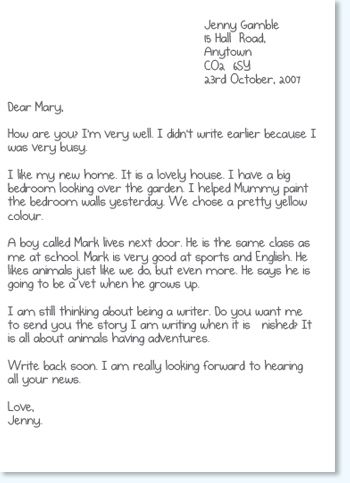 If you want Rachel to write for your business, offer behavioral or academic consultation, or speak at your facility about research-based strategies that support children, email her at [email protected].
If you want Rachel to write for your business, offer behavioral or academic consultation, or speak at your facility about research-based strategies that support children, email her at [email protected].
www.educationandbehavior.com
Like this:
Like Loading...
step-by-step instructions with expert advice
And now the first letter, the first word, appears on a piece of paper. Uneven and uncertain. But long-awaited. How to teach a child to write? How can I help him develop writing skills at home? Answers-in our material
Alena Gerashchenko
Author KP
Anna Shumilova
Methodist of the Teacher Platform
Mars Diamond 9000
Director0003
Writing is an important skill that is learned in preschool and elementary school. The opinions of experts differ: someone thinks that it is better not to put a letter to the child at home, someone, on the contrary, is convinced that it is the parent who opens the world of writing to the child. We believe that you can start developing the skill of writing letters at home - learn to draw pictograms, connect dots on paper, draw - not write - letters. Leave the capital letters and intricate, ornate words to the schoolteachers. Teach your child the basics. Get him interested in drawing, help develop spatial perception of reality, teach hand-finger coordination. We will tell you step by step how to teach your child the basics of writing before school.
We believe that you can start developing the skill of writing letters at home - learn to draw pictograms, connect dots on paper, draw - not write - letters. Leave the capital letters and intricate, ornate words to the schoolteachers. Teach your child the basics. Get him interested in drawing, help develop spatial perception of reality, teach hand-finger coordination. We will tell you step by step how to teach your child the basics of writing before school.
Step-by-step instructions for teaching a child to write
Everything needs a system. In training, a systematic, everyday contribution to the development of skills is very important. Compliance with the following steps will lay the foundation for high-quality development of the child's writing.
Step #1. Get interested
Start telling children in an exciting way what writing is, why it is needed, how it originated and developed. The main thing is to present the story not with dry facts.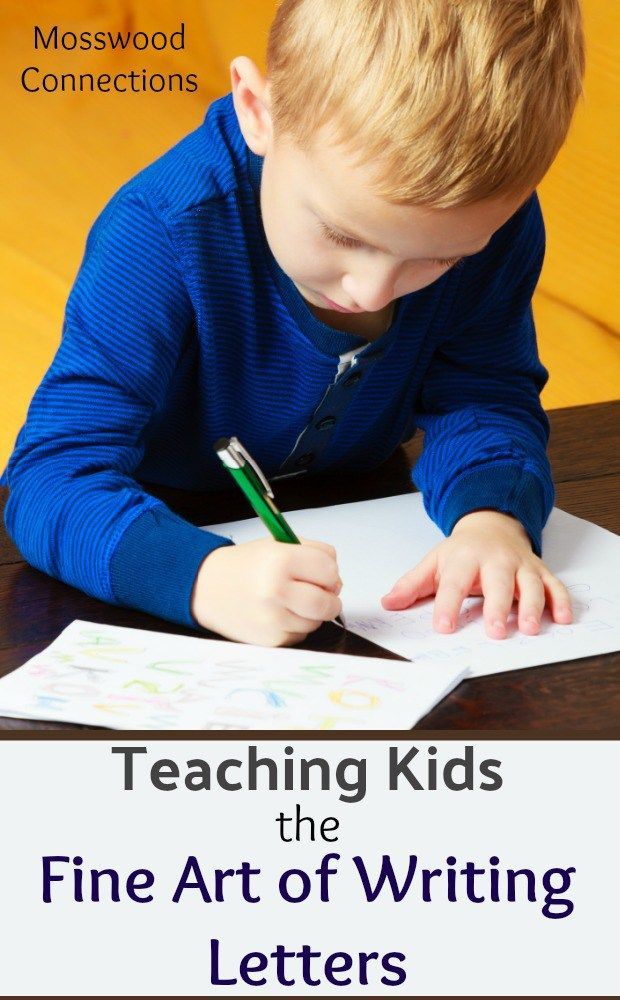 Do it brightly, colorfully, picturesquely. Show your child photographs of the walls of the Egyptian pyramids, which depict various drawings and hieroglyphs. Tell your son or daughter the story of the Novgorod boy Onfim, who wrote birch bark letters in the 13th century, show his monument, and the letters and drawings. The emotional presentation of the story, coupled with illustrative material - all this will resonate with the child. Also invite the child to do the exercises during the stories. Here are a couple of activities to accompany stories that will help your child understand the nature of writing and want to learn to write on their own as soon as possible.
Do it brightly, colorfully, picturesquely. Show your child photographs of the walls of the Egyptian pyramids, which depict various drawings and hieroglyphs. Tell your son or daughter the story of the Novgorod boy Onfim, who wrote birch bark letters in the 13th century, show his monument, and the letters and drawings. The emotional presentation of the story, coupled with illustrative material - all this will resonate with the child. Also invite the child to do the exercises during the stories. Here are a couple of activities to accompany stories that will help your child understand the nature of writing and want to learn to write on their own as soon as possible.
Exercise 1
Show your child pictograms (wall pictures that our ancestors used to communicate information to each other), invite him to fantasize and make up an oral story based on the pictures he saw.
Exercise 2
And vice versa: make up a story with your child and invite him to illustrate it in detail with the help of pictures. Such tasks, among other things, develop fantasy, speech and storytelling skills.
Such tasks, among other things, develop fantasy, speech and storytelling skills.
After the pictograms, go on to explain ideographic writing. It sounds complicated, but in fact, ideography uses simplified pictograms - symbols. The Chinese language is built on symbolism (principle 1 character = 1 word), designations in the transport sector. Acquaintance with the symbols will be interesting to the child if you pay attention to them during a walk.
You can teach a child to draw simple images with meaning: for example, two wavy horizontal lines symbolize a pond; crossed circle - prohibition, the word "no" and so on. Stories about ideographic writing and "practical ideography" will expand the horizons of the baby, teach him to perceive the world around him more sensitively, develop creative thinking, and teach spatial perception.
If you feel that the kid is ready for more (he asks questions, draws a lot), tell him about modern writing, about languages. Explain that the Egyptians wrote from right to left - it was inconvenient: hieroglyphs, drawings were smeared by hand.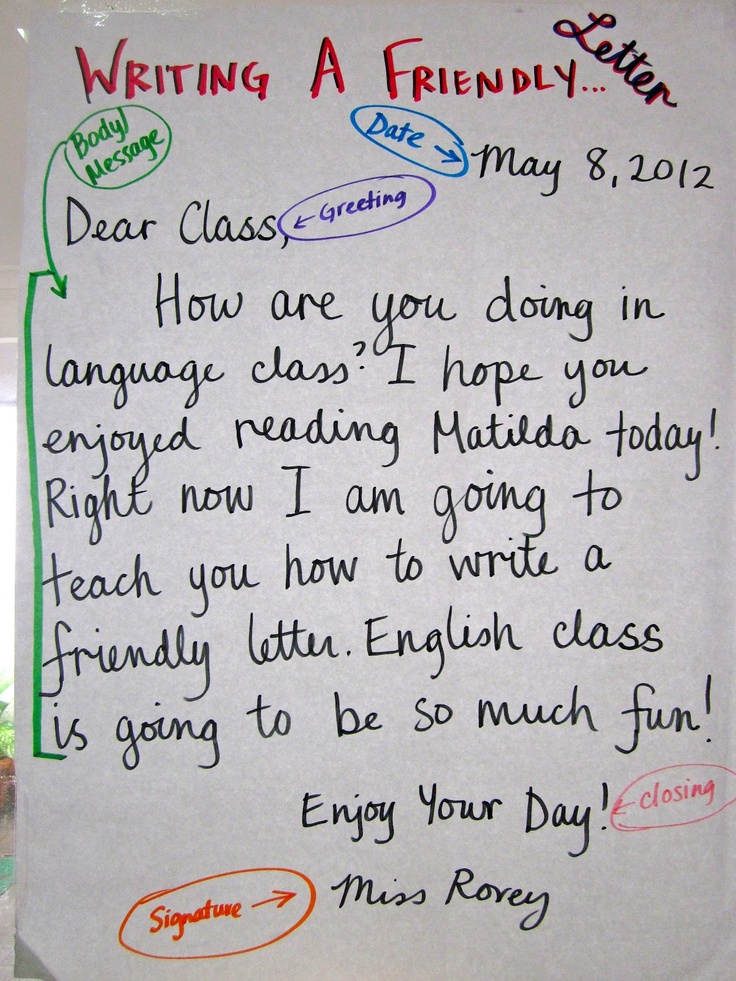 Show your child that writing like this is not very convenient. Tell us that we inherit the experience of the ancient Greeks - we write from left to right. Take a digression into history and tell the fidget that Latin was developed from the ancient Greek language, and it became the official language of the church. Latin formed the basis of many other languages (English, German). And our ancestors developed Slavic writing, the Russian language. Conclude that today we use the Russian script, an alphabet of 33 letters. Show the child a primer, study each letter with him. Invite the child to circle each of them with a finger.
Show your child that writing like this is not very convenient. Tell us that we inherit the experience of the ancient Greeks - we write from left to right. Take a digression into history and tell the fidget that Latin was developed from the ancient Greek language, and it became the official language of the church. Latin formed the basis of many other languages (English, German). And our ancestors developed Slavic writing, the Russian language. Conclude that today we use the Russian script, an alphabet of 33 letters. Show the child a primer, study each letter with him. Invite the child to circle each of them with a finger.
Step #2: Practice Moderately
Spend no more than 15 minutes a day on letter-drawing. Let the child during this time repeat the outlines of the letters from the primer. Let him try to draw them. If the letters are crooked - it's not scary. It should not scare you that the signs crawling out from under the pencil of a novice writer do not quite look like letters.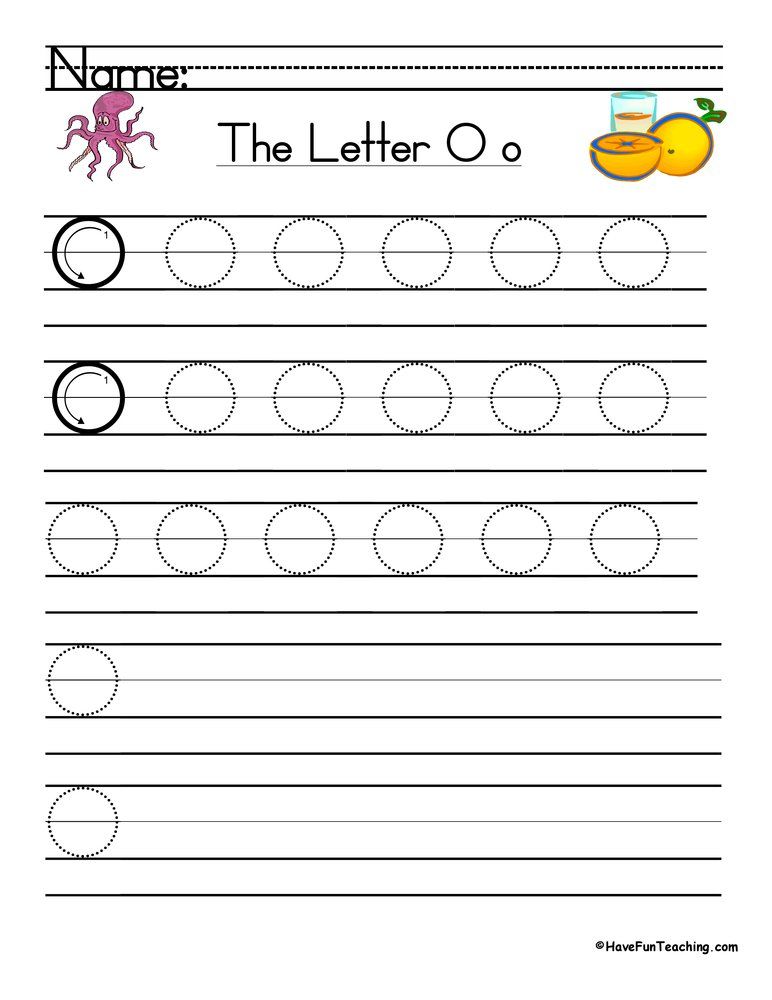 Transform the process of learning to write into a game - sit next to the baby and draw incomprehensible signs of eyes, smiles, legs and arms. So the child will have more fun. He will trust you, the process, the primer, and next time he will accurately draw a letter, and not a hippopotamus or a fat cat. The main rule is to learn to draw letters for a quarter of an hour. Let the child rest. Even the creativity that the kid is passionate about can exhaust him and discourage him from learning to write.
Transform the process of learning to write into a game - sit next to the baby and draw incomprehensible signs of eyes, smiles, legs and arms. So the child will have more fun. He will trust you, the process, the primer, and next time he will accurately draw a letter, and not a hippopotamus or a fat cat. The main rule is to learn to draw letters for a quarter of an hour. Let the child rest. Even the creativity that the kid is passionate about can exhaust him and discourage him from learning to write.
Spend no more than 15 minutes a day on letter-drawing. Photo: globallookpress.com
Step No. 3. “We wrote, we wrote, our fingers were tired!” Develop fine motor skills
Together with your child, sculpt from plasticine, build towers and wonderful animals from the designer, draw, color, make applications, lay out mosaics, embroider with a cross. Practice daily, captivate your child with creativity and at the same time help him develop fine motor skills of his hands.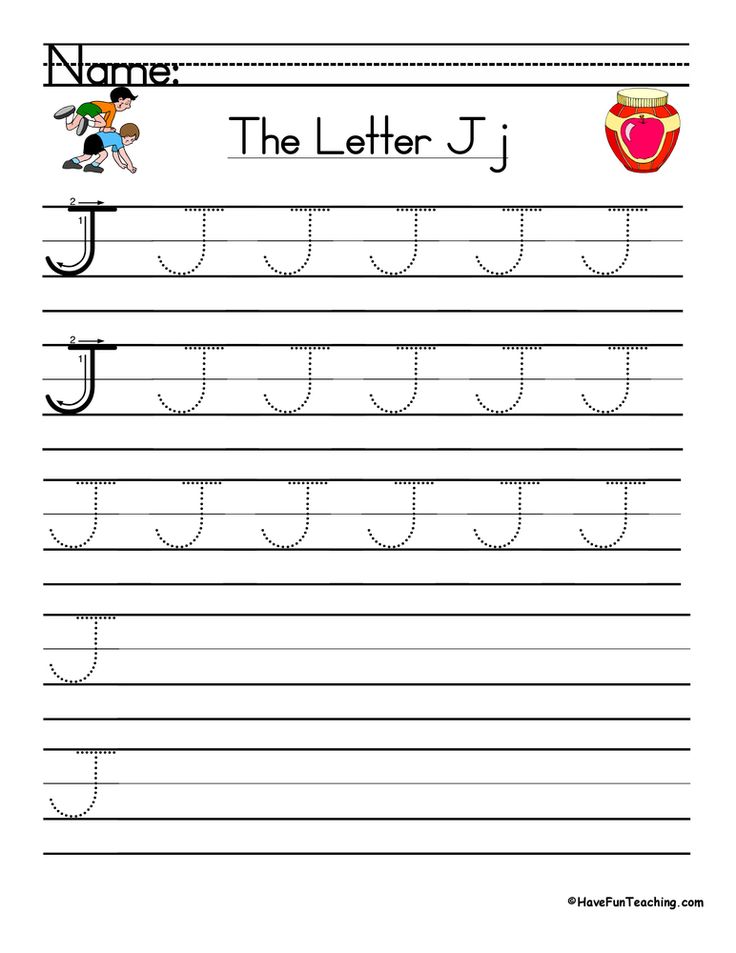 If he learns to manipulate various small objects, it will be easier for him to learn to write. Fine motor skills training allows you to develop the temporal regions of the brain that are responsible for speech. If the baby has good motor skills, he writes well, then it will also not be difficult for him to tell a poem beautifully or come up with a story and vividly present it to his family, classmates, teacher. In man, everything is very subtly interconnected.
If he learns to manipulate various small objects, it will be easier for him to learn to write. Fine motor skills training allows you to develop the temporal regions of the brain that are responsible for speech. If the baby has good motor skills, he writes well, then it will also not be difficult for him to tell a poem beautifully or come up with a story and vividly present it to his family, classmates, teacher. In man, everything is very subtly interconnected.
Read also
"Mom, buy": how to deal with children's requests in the shopping center, parental abuse in response: perhaps each of us was an unwitting witness to such heartbreaking scenes. Together with the teacher-psychologist Ekaterina Bolysheva, we learn to avoid mistakes that can lead to children's tantrums in the store0035
The child's back must not be bent by the wheel. Incorrect posture will negatively affect the health of the internal organs of the baby, his psychological state, even the activity of his thinking.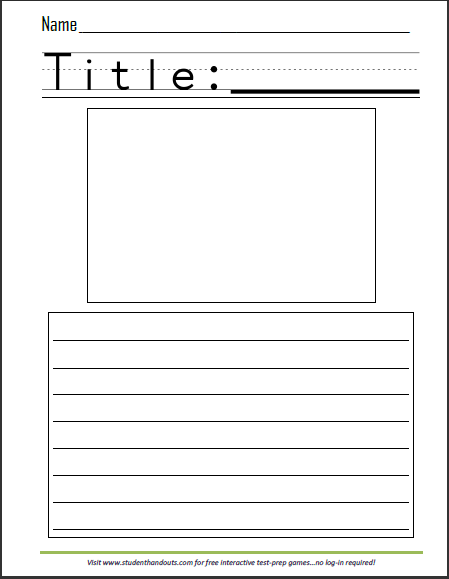 Do sports with your child (gymnastics, swimming). Show him how to walk correctly - straight with a slightly raised chin, rushing the top of his head up. Teach him to sit at the table correctly: the child should bend in the lower back, the shoulders should be slightly relaxed, lowered. The kid should not lean heavily on the back of the chair and shift the entire body weight onto the table. The muscles of the upper body should be toned and slightly tense, but the neck should not be pulled forward. A slight tilt of the head is acceptable. In any case, consult with your pediatrician about how to properly seat your child at the table. He will suggest effective practices for controlling the muscles of the back, neck, arms and will talk in detail about why it is so important to develop the habit of sitting at the table correctly.
Do sports with your child (gymnastics, swimming). Show him how to walk correctly - straight with a slightly raised chin, rushing the top of his head up. Teach him to sit at the table correctly: the child should bend in the lower back, the shoulders should be slightly relaxed, lowered. The kid should not lean heavily on the back of the chair and shift the entire body weight onto the table. The muscles of the upper body should be toned and slightly tense, but the neck should not be pulled forward. A slight tilt of the head is acceptable. In any case, consult with your pediatrician about how to properly seat your child at the table. He will suggest effective practices for controlling the muscles of the back, neck, arms and will talk in detail about why it is so important to develop the habit of sitting at the table correctly.
Popular questions and answers
How to teach a child to write beautifully?
Anna Shumilova, methodologist of the Uchi.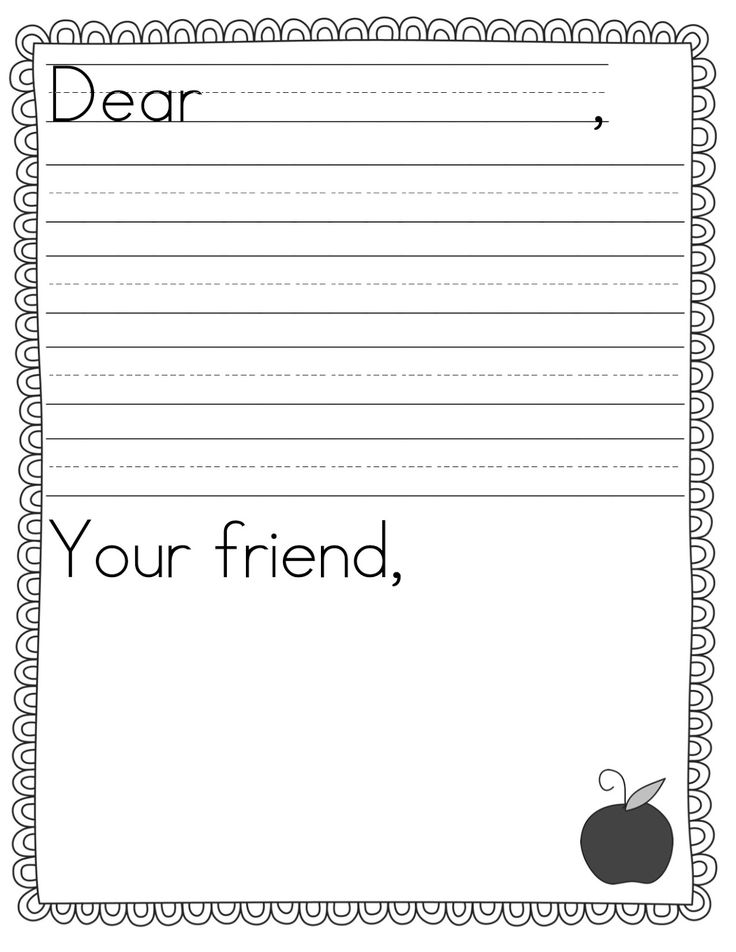 ru platform:
ru platform:
— Is it really necessary to demand beautiful handwriting and perfectly clean notebooks from a child? Some parents are worried when teachers lower their children's grades for the design of notebooks, and they believe that the main thing is to write down the exercise without errors, give the correct answer to the question, and find the right solution to the problem. Other parents, on the contrary, force the child to rewrite the work with blots and expect the teacher to spend enough time on calligraphy in the classroom. The truth, as always, lies somewhere in the middle. Any teacher knows from his own experience that in dirty, untidy notebooks there are rarely work without errors. Order and accuracy help to form a harmonious, logical thinking. If the student writes quickly and readably, this becomes a huge advantage for him in mastering the school material. We are of the opinion that the teacher should teach children to write. Any adult person knows for himself that it is quite difficult to change handwriting or the way letters are written. Incorrect spelling of letters will not help either the first grader or his teacher, but, on the contrary, will cause additional difficulties. However, a parent can help.
Incorrect spelling of letters will not help either the first grader or his teacher, but, on the contrary, will cause additional difficulties. However, a parent can help.
If you want to help your child prepare for writing, it is best to start with block letters and do no more than 20 minutes at a time. You should also explain to the future student the basic principles of writing.
1. The line is the letter house. It has a floor and a ceiling. You can not break through the floor and stick out the legs of the letters from there. You can't break through the ceiling and stick your head out like a giraffe. If such a nuisance nevertheless happened with the letters, you can give the child a colored pencil and ask them to underline the hooligan letters and ask what exactly is wrong with them. After that, be sure to underline the letters that turned out to be written correctly, and praise the child. Another great exercise is coloring. We select a small part of the picture and ask to color it without going beyond the outline of the figure.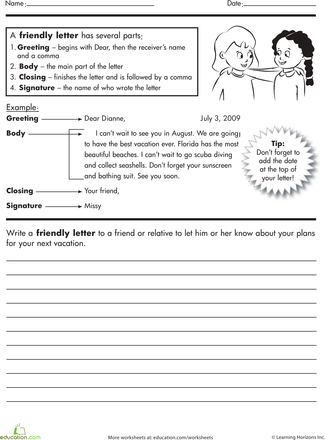 For little naughty fingers, it's not so easy.
For little naughty fingers, it's not so easy.
2. When we write letters, we imagine the rails on which the train travels. If the rails cross, the train will derail and fall. The letters should not dance on the line, but stand like soldiers. After the kid writes a line, you can take a ruler and draw vertical lines through the letters. If the rails are straight everywhere, then the train arrived wonderfully, and you can put a big fat plus on this line! Over time, the rails may become slanted, but should remain parallel.
3. Written letters consist of a certain set of elements: sticks, hooks, loops and ovals. As we wrote above, it’s better not to collect letters without a teacher, but it’s worth practicing writing sticks of different lengths. To work with an oval, we can draw a box. The oval should look out the window and not get stuck in it. If a child draws a circle, then his chubby cheeks will not crawl through the window. Cheeks will have to be erased.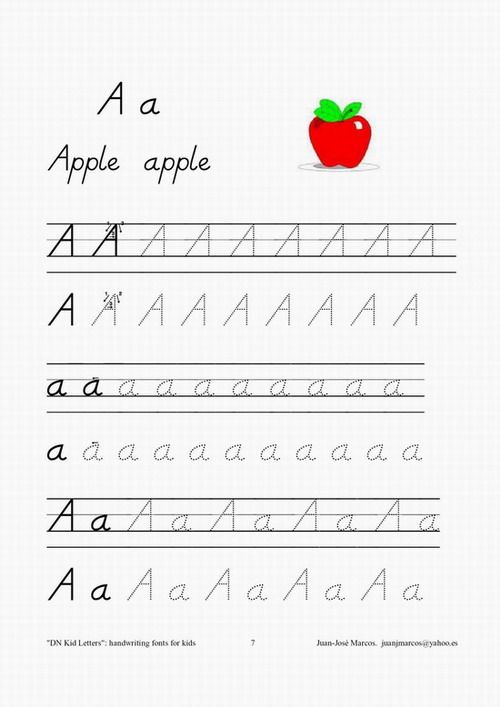 In addition to writing, we advise you to have an A4 lined notebook. If you don't have one, the regular one will do. First, the parent himself draws a large beautiful printed letter. The child paints its elements in different colors. Then we write giant letters (several centimeters high). At the beginning of the line, the parent puts dots, the child circles them, and only then appends the line on his own. Next come the middle letters and, towards the end of the page, the midget letters. While the child is writing, you can ask him to pronounce the sound of a capital letter in a rough voice, the sound of a middle letter in a normal voice, and squeak the sound of a midget letter. That will be much more fun!
In addition to writing, we advise you to have an A4 lined notebook. If you don't have one, the regular one will do. First, the parent himself draws a large beautiful printed letter. The child paints its elements in different colors. Then we write giant letters (several centimeters high). At the beginning of the line, the parent puts dots, the child circles them, and only then appends the line on his own. Next come the middle letters and, towards the end of the page, the midget letters. While the child is writing, you can ask him to pronounce the sound of a capital letter in a rough voice, the sound of a middle letter in a normal voice, and squeak the sound of a midget letter. That will be much more fun!
How to teach a child to write quickly?
Anna Shumilova:
— A quick letter is a continuous letter. He will be taught by a teacher at school. As soon as the literacy period ends (around February 1st grade) and the Russian language begins, you can dictate very short dictations to your child. You can use the collection of O. V. Uzorova. You can come up with short funny sentences about your child yourself. This will generate additional interest in the letter. Only practice and control over the maximum continuity of the hand while writing one word will help to write quickly. So that the child does not forget what this or that letter looks like (which happens up to grade 3), it is necessary to spend minutes of calligraphy.
You can use the collection of O. V. Uzorova. You can come up with short funny sentences about your child yourself. This will generate additional interest in the letter. Only practice and control over the maximum continuity of the hand while writing one word will help to write quickly. So that the child does not forget what this or that letter looks like (which happens up to grade 3), it is necessary to spend minutes of calligraphy.
Read also
Motivation of a child to study at school
Komsomolskaya Pravda tells why children are waiting for the Day of Knowledge, but after a week they suddenly start to get sick and tells how to make the child motivated to study
2
How to teach a child to write at home?
Almaz Marsov, director of the online school "It's clear":
- Learning to write can be divided into 2 stages: preparing the hand for writing and writing itself.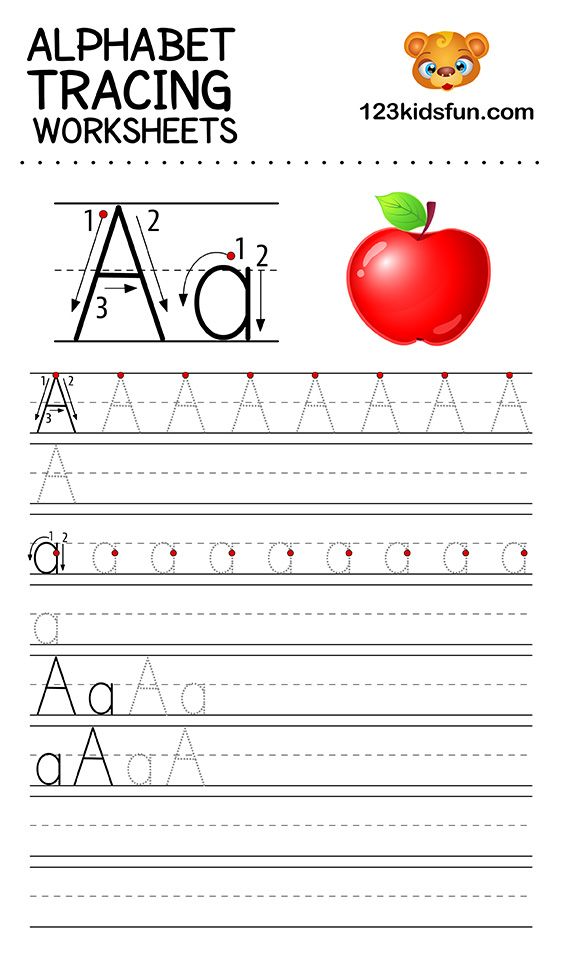 At the preparatory stage, you need to teach the child to coordinate brush movements. To do this, play and create with your child. Coloring pages, hatching tasks, as well as graphic exercises will help you: graphomotor tests, labyrinths, tasks of the series “connect by dots”, “connect by dotted lines”, “draw the second half” and so on. In a word, these are the tasks that will teach a child to use a pencil or pen - to set the direction of the lines, control the force of pressure, control the size of the image, the clarity of the lines and smoothness. After that, you can start writing letters and numbers.
At the preparatory stage, you need to teach the child to coordinate brush movements. To do this, play and create with your child. Coloring pages, hatching tasks, as well as graphic exercises will help you: graphomotor tests, labyrinths, tasks of the series “connect by dots”, “connect by dotted lines”, “draw the second half” and so on. In a word, these are the tasks that will teach a child to use a pencil or pen - to set the direction of the lines, control the force of pressure, control the size of the image, the clarity of the lines and smoothness. After that, you can start writing letters and numbers.
The main principle is to go from simple to complex. First, you can learn to write part of a letter or number, then the letter or number in full. It is important to show the child the correct sequence of writing letters and numbers: from left to right, from top to bottom. Too many children come to school with the wrong letter and are faced with the need to relearn. To avoid this, we recommend that you complete tasks with the children and control the correct spelling until they develop a writing skill.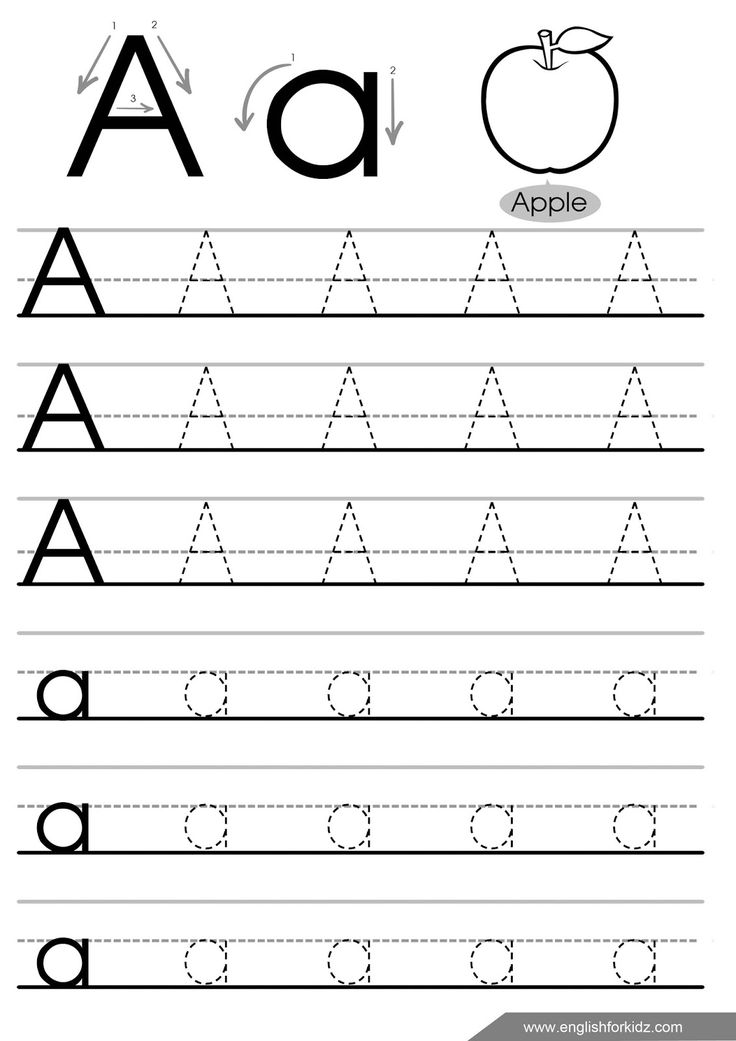
Of course, the best helper is prescription. As soon as the child masters the letter with a hint, you can move on to a more difficult option - writing in a notebook. The more practice, the more confident and better the child's writing. Finally, the skill needs to be consolidated and improved. Write everywhere: sign drawings and crafts, write on asphalt with crayons, on misted glass with your finger - turn writing into a game and an interesting activity for a child. The more you practice, the faster and more beautiful the child will write.
What kind of games help children develop writing skills?
Anna Shumilova:
— Almost any exercise can be turned into a game. It depends on the submission of the material. You can draw letters with your nose in the air, collect letters from sweets. You can color the letters, circle them with dots, and then give them gifts. If the letter is oval, it is necessary to give objects that also contain an oval in their image.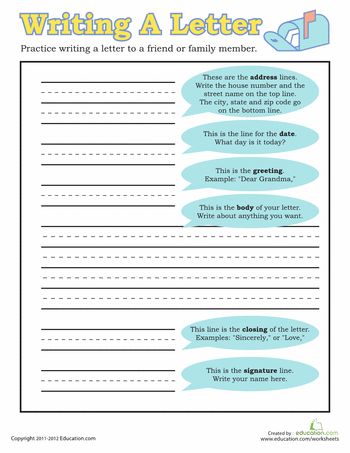 Write not only at the table, but also with chalk on the pavement, a marker on a blackboard, sand on glass or on a piece of paper, show letters on your fingers, ask you to guess which letter you are in.
Write not only at the table, but also with chalk on the pavement, a marker on a blackboard, sand on glass or on a piece of paper, show letters on your fingers, ask you to guess which letter you are in.
What determines how fast a child learns to write?
Anna Shumilova:
— We recommend taking your child to at least a few calligraphy lessons or watching video tutorials on YouTube. The teacher will tell you how to correctly determine the size of the line and letter. Pen and ink will not allow the child to rush. He will learn to breathe correctly, regulate the pressure on the pen, focus on writing, see the extraordinary artistic beauty of various styles of writing letters. This will be a great experience and will help the kid develop writing skills and strive for perfection.
Read also
How to teach a child to do homework on their own
In an ideal world, children themselves go to bed and do their homework - but alas, in reality, everything is not so.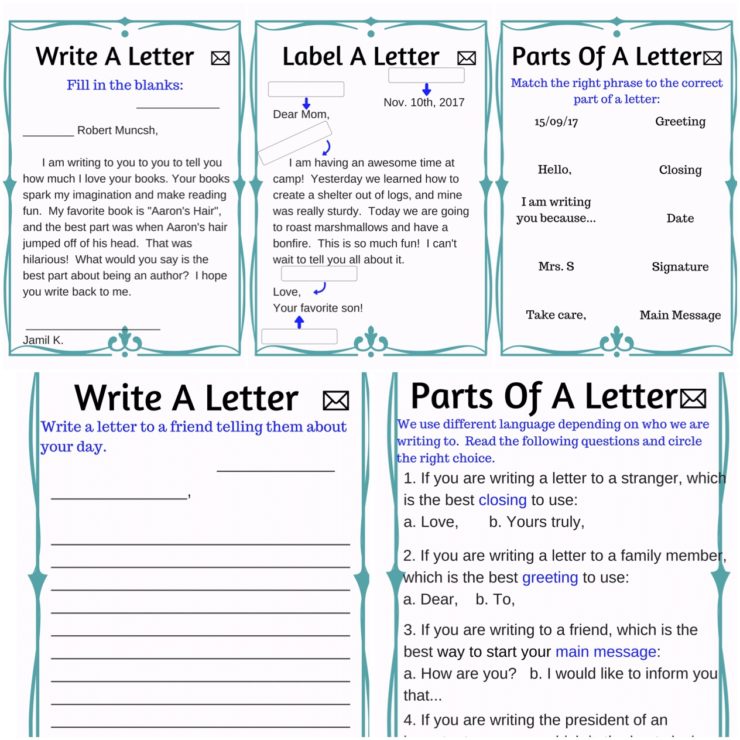 Most parents of schoolchildren still have to help them with their homework
Most parents of schoolchildren still have to help them with their homework

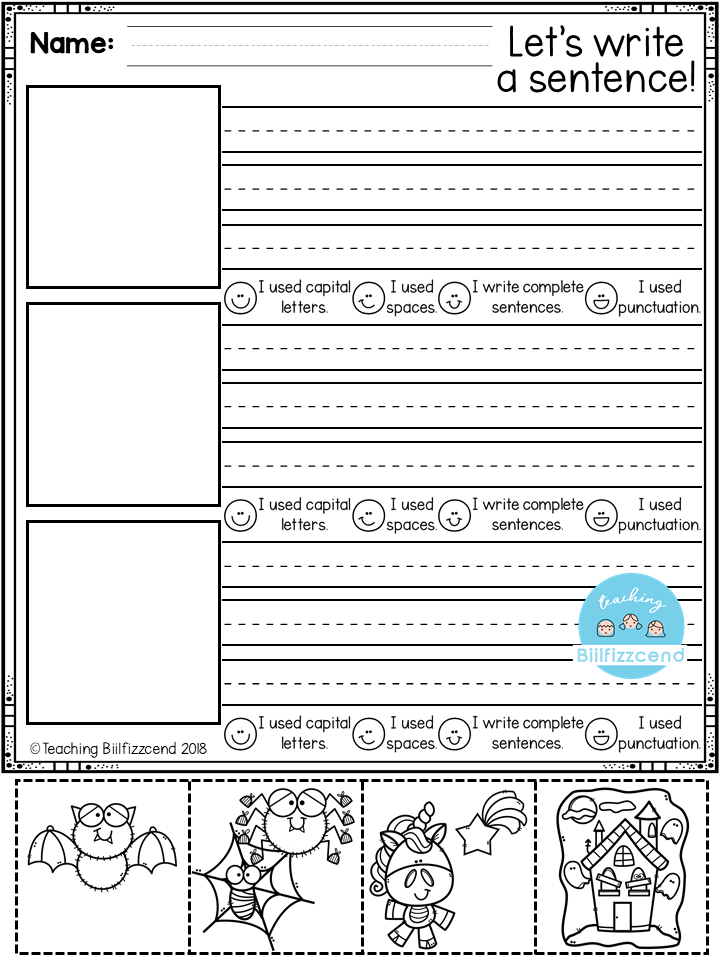
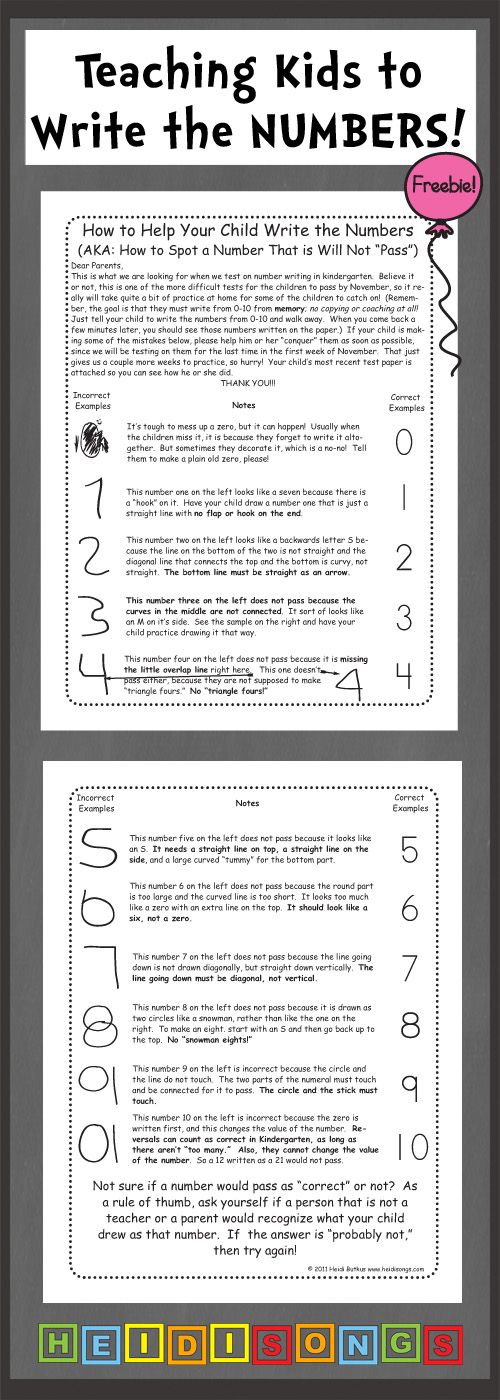 In order to consolidate the comparative stage, proceed to writing this letter. For now, do it yourself - slowly, slowly, commenting on each movement: "I put a dot over the line and move my hand up," etc.
In order to consolidate the comparative stage, proceed to writing this letter. For now, do it yourself - slowly, slowly, commenting on each movement: "I put a dot over the line and move my hand up," etc. 